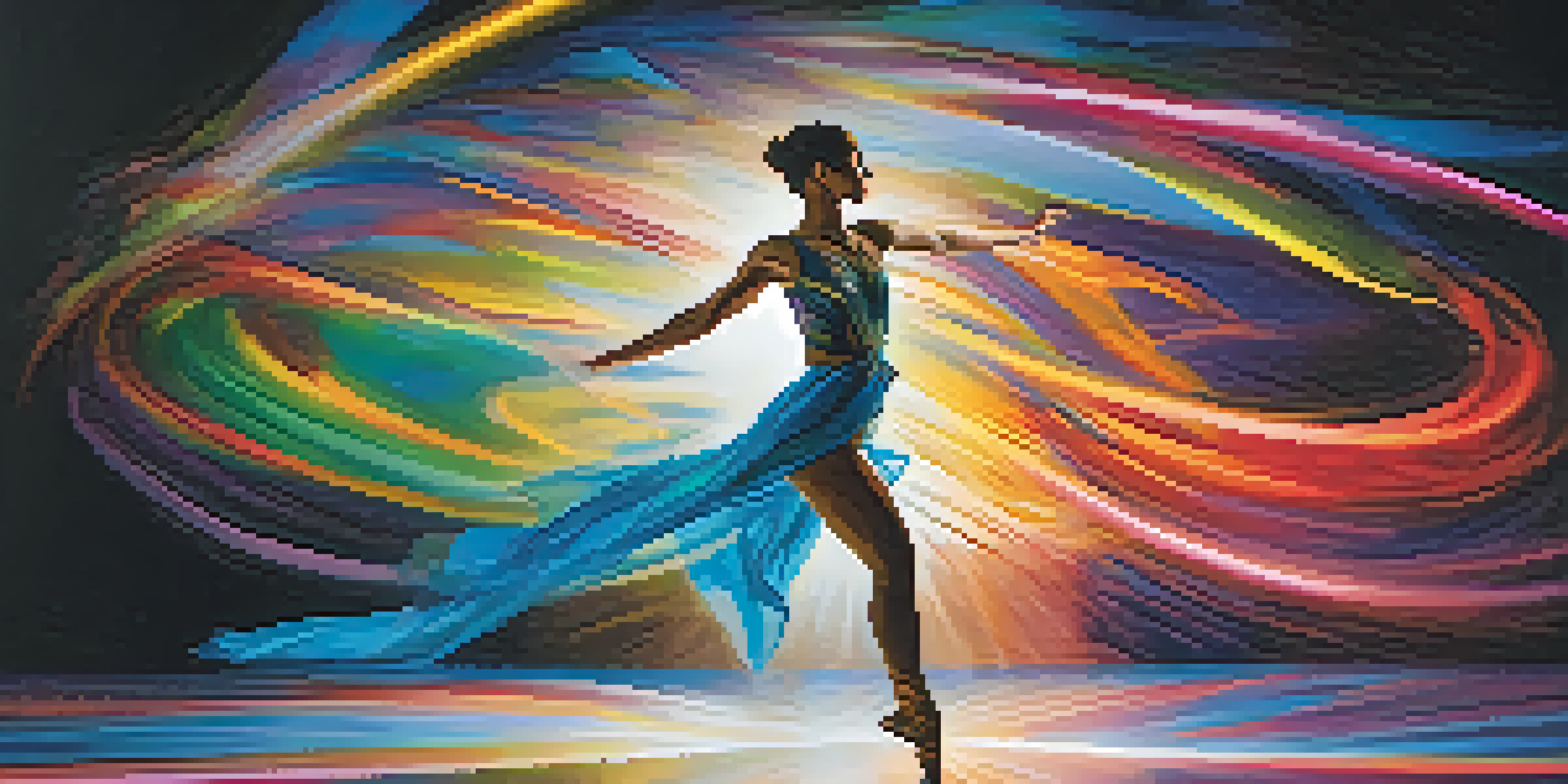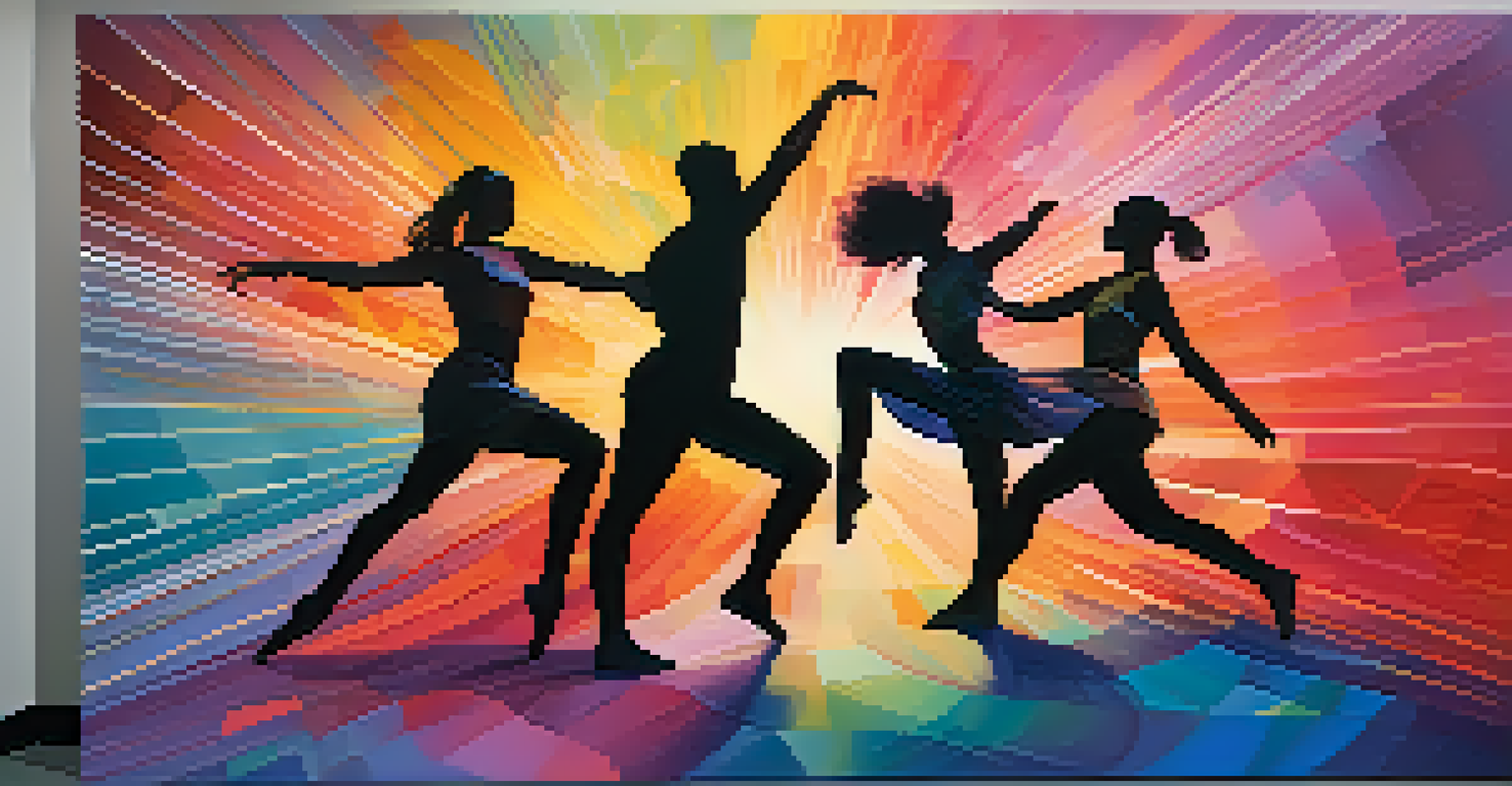Exploring Motion Capture Technology in Modern Dance Performances

Understanding Motion Capture Technology and Its Origins
Motion capture, or MoCap, originated in the film industry, capturing real-time movements to create realistic animations. This technology involves using sensors and cameras to track the movements of performers, translating their actions into digital data. The concept has evolved significantly, making it accessible for various art forms, including modern dance.
Dance is the hidden language of the soul.
In dance, MoCap is not just a tool for choreography but a bridge between the physical and digital realms. It allows choreographers to visualize movements, experiment with styles, and analyze performances in ways that were previously unimaginable. This blend of technology and artistry has opened new avenues for creative expression.
By understanding its roots, dancers and choreographers can appreciate how motion capture can enhance their work. The synergy between technology and human movement invites endless possibilities, paving the way for innovative performances that push the boundaries of traditional dance.
How Motion Capture Transforms Dance Choreography
One of the most remarkable impacts of motion capture is its ability to transform choreography. Dancers can record their movements, which can then be analyzed and manipulated digitally to create new sequences. This not only saves time during the creative process but also encourages experimentation with unconventional movements.

For instance, choreographers can take recorded dances and explore variations, adjusting tempo, rhythm, or even the physical environment. This flexibility allows for a more dynamic rehearsal process, where ideas can be visualized and tested almost instantly. The result is a richer, more intricate choreography that might not have been possible without this technology.
MoCap Enhances Dance Creativity
Motion capture technology transforms choreography by allowing dancers to record, analyze, and manipulate their movements, fostering experimentation and innovative performances.
Moreover, the use of motion capture can help bridge the gap between choreographers and dancers. It provides a shared visual language, allowing them to communicate ideas more effectively, ultimately leading to more cohesive and innovative performances that captivate audiences.
Enhancing Audience Experience with Visual Effects
Motion capture technology not only influences the dancer but also reshapes the audience's experience. By integrating visual effects with live performances, artists can create mesmerizing spectacles that engage viewers on multiple levels. The dynamic interplay between live movement and digital imagery transforms traditional dance into a multi-sensory experience.
Technology is best when it brings people together.
Imagine a dancer performing on stage while their movements are projected as vivid animations, morphing and evolving in real-time. This fusion of physical and digital artistry captivates audiences, making them feel as if they are part of the performance. Such experiences elevate the emotional impact of the dance, leaving lasting impressions.
Additionally, these visual enhancements can help convey complex themes and narratives, allowing audiences to connect with the performance on a deeper level. When technology complements choreography, it not only entertains but also provokes thought and reflection, enriching the overall dance experience.
Motion Capture in Collaborative Dance Projects
Collaboration is at the heart of many successful dance projects, and motion capture can facilitate this process in exciting ways. By allowing multiple artists to share and manipulate movement data, choreographers, dancers, and visual artists can work together more effectively. This collaborative spirit fosters creativity and innovation, leading to groundbreaking performances.
For example, a choreographer can create a dance piece with dancers from different backgrounds, all contributing their unique styles. Motion capture enables them to record their movements, which can be combined and reimagined through digital tools. The result is a rich tapestry of diverse influences, showcasing the beauty of collaboration.
Audience Engagement Through Innovation
Integrating visual effects with motion capture creates immersive experiences that captivate audiences and deepen their emotional connection to the performance.
Furthermore, joint projects can extend beyond the stage, incorporating elements of film, theater, and visual arts. This interdisciplinary approach not only enhances the performance but also broadens the audience's appreciation for the art form, making dance a more inclusive and collaborative experience.
The Role of Technology in Dance Education
Incorporating motion capture technology into dance education can revolutionize how students learn and develop their skills. By providing instant feedback through recorded movements, students can identify areas for improvement and refine their techniques. This immediate insight can significantly accelerate their learning process.
Imagine a dance class where students can see their movements projected on a screen, allowing them to compare their form with that of professional dancers. This visual feedback not only enhances understanding but also encourages self-correction and growth. It empowers students to take charge of their learning journey, fostering a deeper connection to the art of dance.
Moreover, exposure to cutting-edge technology prepares students for a rapidly evolving industry. As the intersection of dance and technology continues to grow, those familiar with motion capture will find themselves well-equipped to explore a range of career opportunities, from performance to choreography and beyond.
Challenges and Considerations in Motion Capture
While motion capture offers incredible opportunities, it also comes with its own set of challenges. One of the primary concerns is the cost associated with high-quality motion capture systems and software. For many independent artists and smaller companies, these financial barriers can be significant, limiting their access to this transformative technology.
Additionally, there’s the question of artistic integrity. Some dancers may feel that relying on technology could overshadow the human element of performance. It’s essential for artists to find a balance, using motion capture as a tool for enhancement rather than a replacement for authentic movement and expression.
Collaborative Projects Expand Artistry
Motion capture facilitates collaboration among artists from diverse backgrounds, enriching performances through the blending of unique styles and interdisciplinary approaches.
Finally, as with any technology, there are ethical considerations to address. The use of digital data raises questions about ownership and representation, especially when it comes to collaborative projects. Artists must navigate these issues thoughtfully to ensure that their work remains a true reflection of their creativity.
The Future of Motion Capture in Dance
As technology continues to advance, the future of motion capture in dance looks promising. Innovations such as real-time motion capture and augmented reality are already beginning to reshape how performances are created and experienced. These developments open up new frontiers for exploration, allowing artists to push the limits of their creativity.
Imagine performances that adapt in real-time to audience reactions, creating a dynamic experience that evolves with each show. This interactive element not only enhances engagement but also makes every performance unique. The potential for creating immersive environments that blend dance with virtual reality is an exciting prospect for the future.

In summary, the integration of motion capture technology in modern dance not only enriches artistic expression but also expands the possibilities for future generations. As artists embrace these innovations, we can expect to see even more captivating performances that challenge our perceptions of dance and its relationship with technology.